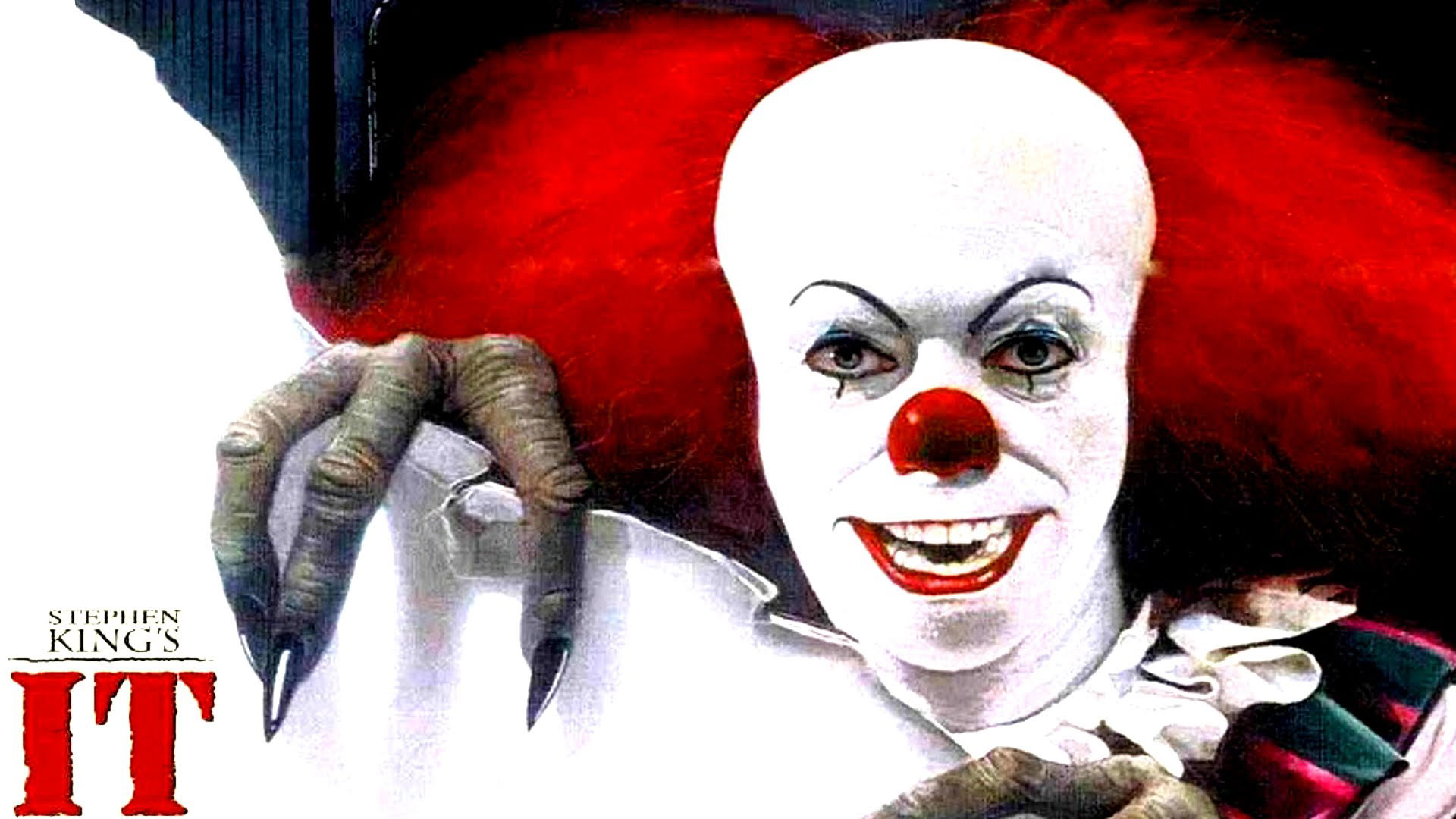The film: When several children are murdered in the town of Derry, Maine, the local librarian Mike Hanlon (Tim Reid) calls his old friends, Bill Denborough (Richard Thomas), Beverley Marsh (Annette O’Toole), Ben Hanscom (John Ritter), Eddie Kaspbrak (Dennis Christopher), and Richie Tozier (Harry Anderson). Plaguing Derry is a mysterious entity they call It, which manifests as childhood fears, including the form of Pennywise the Clown (Tim Curry). The friends defeated it thirty years earlier and return to Derry to fulfil their promise and finish the job.
Another slight bend in the rules this week with the It mini-series, but with a new adaptation on the way and the 1990 version’s considerable reputation, it’s not one I felt I could miss out. Stephen King’s gargantuan novel remains to this day the only horror that has led to me unashamedly sleeping with the lights on. I was 23 years old and it scared the complete crap out of me. The novel is almost a grand tour of King’s themes and quirks, right down to the bonkers ending, and it’s a particular favourite.
Thanks to Tim Curry’s towering performance as Pennywise (which really does live up to expectations), It has a certain cultural ubiquity and an ability to send shivers down the spines of viewers at its mere mention. And it’s really not for anyone with a thing about clowns. Therefore, it was with a mixture of trepidation and excitement that I approached the mini-series.
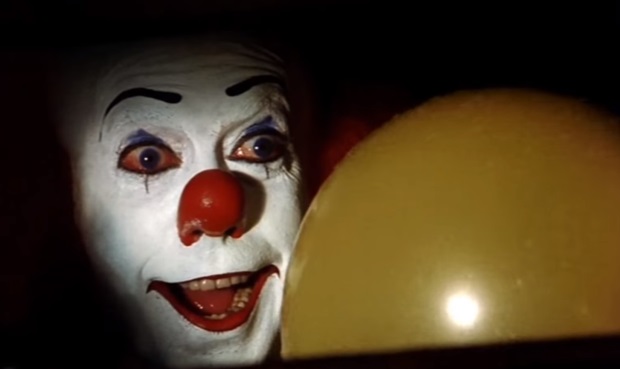
Adapted by Lawrence D. Cohen, who previously worked on the brilliant ‘Salem’s Lot, the novel is streamlined down impressively into three hours. It is a tale of confronting childhood traumas and working through them when they re-emerge in adult life. They might come in the form of a clown or a werewolf, sometimes it is simply an abusive family member, but they have all impacted the main characters’ lives. Despite the amount he had to cut from King’s book, Cohen keeps that confrontation with the past at the heart of his adaptation.
There aren’t many outright scares here, rather a general unsettling atmosphere that seems to ramp up a notch every time Curry screams on to the screen. The first half of the tale, focusing on the Losers’ Club as kids, is the strongest. The young cast, including Seth Green as Richie, really sell the oppressive fear they find themselves under, burdened with a responsibility to stop It because the adults aren’t aware it exists. Their friendship feels organic too, looking for all the world like a ragtag gang of outsiders united by their inability to fit in anywhere.
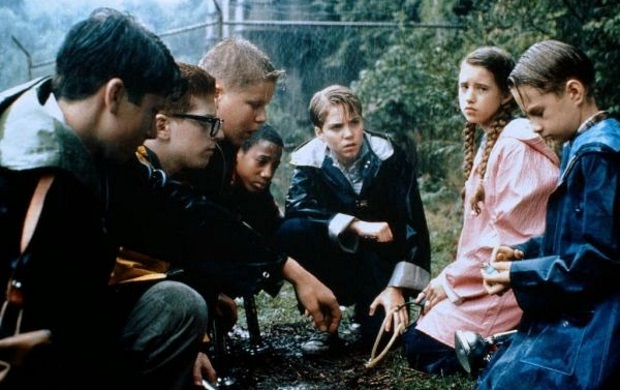
The 1960 scenes really benefit from their chemistry: the stakes feel high and their trip into the sewers is fraught with genuine peril. It makes the character moments feel that bit bigger, like Beverley’s ability to use the slingshot or Eddie’s heroic move with his inhaler. Curry also feels especially menacing in these scenes, his fairly generic clown make-up contorting into a truly horrible mask with just a raise of the eyebrows. His snarling voice is perfect too; no kid wants to face a clown that sounds like he’s been smoking 60 a day since he was 12.
The adult cast and the scenes focusing on them are rather more mixed though, particularly Anderson’s Richie who seems to be operating on a different sound level to just about anyone else, swiftly becoming one-note. Beep beep, Richie. Likewise, Thomas’ Bill never quite sparks into life in a way that the other adult characters do. Ritter’s turn as the unsettled but successful Ben is the solid centre of the group, though he’s never quite given the chance to shine in the same way his childhood counterpart is. O’Toole is particularly good as the constantly abused Beverley, using her return trip to Maine to centre herself again and overcome her repeated traumas.
The shift in focus to their adulthood loses that sense of peril that made their younger counterparts’ tale so enthralling. The pace slows down and the adults never quite sell the abject fear that It inspires quite as well. Where the adult scenes do excel is in replicating the chemistry of the younger Losers’ Club; any scene where they’re just sat around and feeling nostalgic about their happier memories work far better than the horror scenes.
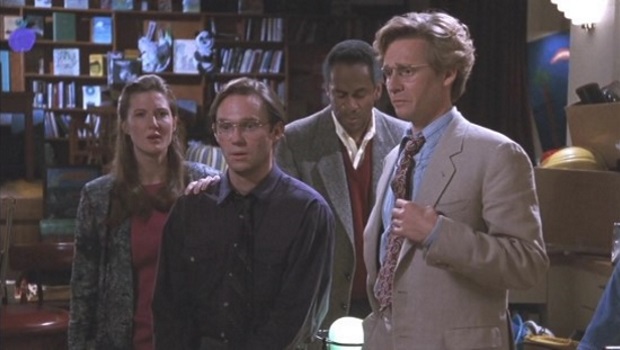
What strikes me most about this adaptation is not the terror of Pennywise or any of the other manifestations of It, but the sorrowful atmosphere that pervades the story. Even in the 1960 segment, there’s an underlying sadness surrounding the inevitability of growing up and growing old. It not only represents the fears of the Losers’ Club, but their mutual loss of innocence. King made this rather more explicit in the bizarre finale to his book, but Cohen renders it more metaphorical in his adaptation, which works much better.
In that sense, It is both better and worse than I expected. Better because it adapts the young characters and the themes of King’s novel really well, offering up a lowkey tension and melancholy. It isn’t always capitalised on, but works brilliantly when it is. It might be streamlined considerably, but the series effectively establishes the characters’ fears and hopes so they can be called upon as needed.
On the other hand, the scares don’t really land in the same way that they do in the book, perhaps due to the power of imagination needed when reading It as well as being a little older (not necessarily wiser) than when I first encountered the story. I’m sure that if I had watched this mini-series at a younger and more impressionable age, the bedroom light may have stayed on once more.
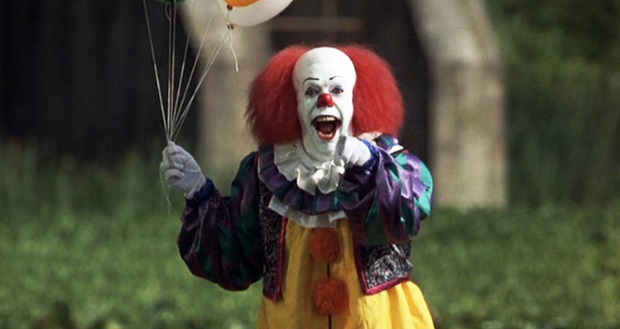
Scariest moment: I did not like the animated photo of Pennywise dancing down the street. There’s something about the joy with which he’s leaping about before revealing his true monstrous nature that really unsettles.
Musicality: Beethoven’s Für Elise is played by Bill’s mother shortly before Georgie is killed, setting up an idyllic suburban scene that’s swiftly undercut afterwards. The music choice provides a gentle contrast to the harshness of the score and the call back to it in Bill’s realisation that he has to stay and fight It works as a testament to the power of memory, be it good or bad.
A King thing: Evil’s sidekicks. Often, the big bads of King’s novels need a little helping hand from the physical realm in order to wreak havoc on his heroes. Here, it’s the institutionalised scapegoat for the Derry murders and former school bully, Henry Bowers, who escapes from the Juniper Hills facility to attack poor Mike. Other sidekicks include Trashcan Man from The Stand, Richard Straker in ‘Salem’s Lot, and anything raised from the dead in Pet Sematary.
Join me next time, Constant Reader, for a little Misery.

